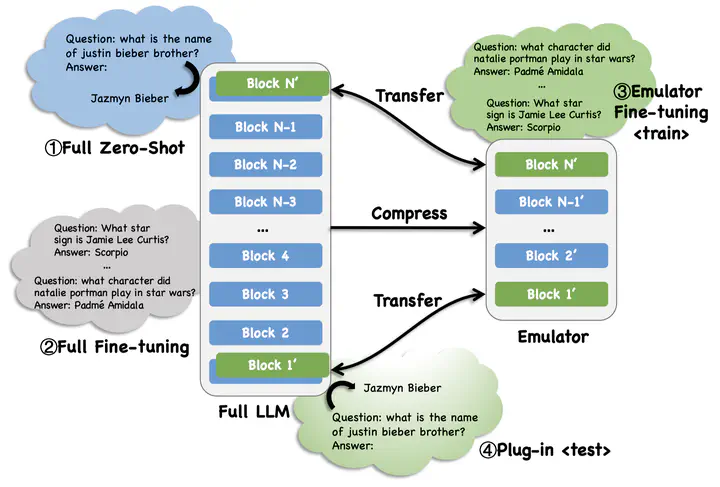CRaSh: Clustering, Removing, and Sharing Enhance Fine-tuning without Full Large Language Model
 Image credit: Original Paper
Image credit: Original Paper摘要
Instruction tuning has recently been recognized as an effective way of aligning Large Language Models (LLMs) to enhance their generalization ability across various tasks. However, when tuning publicly accessible, centralized LLMs with private instruction data, privacy concerns are inevitable. While direct transfer of parameterized modules between models is a plausible approach to address this, its implications and effectiveness need further exploration. This paper focuses on Offsite-Tuning (OFT), a representative technique that transfers transformer blocks between centralized LLMs and downstream emulators. Given the limited understanding of the underlying mechanism of OFT, we perform an empirical analysis on LLMs from the perspectives of representation and functional similarity. Interestingly, our findings reveal a unique modular structure within the layers of LLMs that appears to emerge as the model size expands. Simultaneously, we note subtle but potentially significant changes in representation and intermediate predictions across the layers. Inspired by these observations, we propose CRaSh, involving Clustering, Removing, and Sharing, a training-free strategy to derive improved emulators from LLMs. CRaSh significantly boosts performance of OFT with billions of parameters. Furthermore, we investigate the optimal solutions yielded by fine-tuning with and without full model through the lens of loss landscape. Our findings demonstrate a linear connectivity among these optima falling over the same basin, thereby highlighting the effectiveness of CRaSh and OFT.